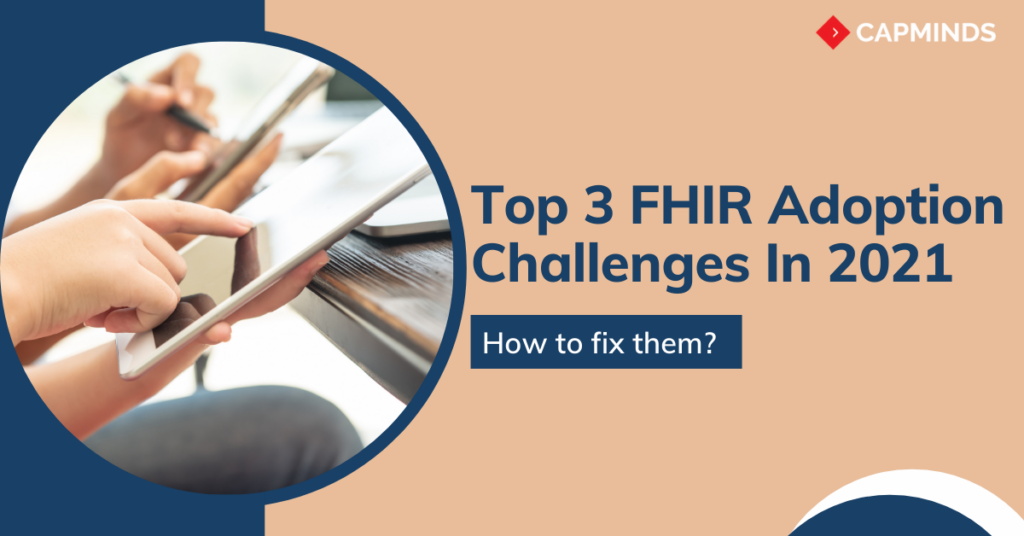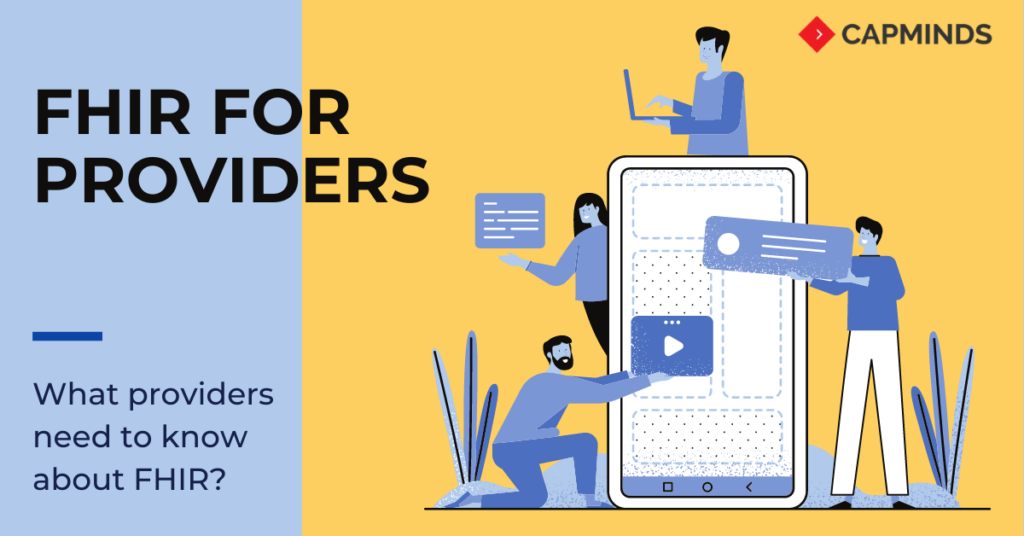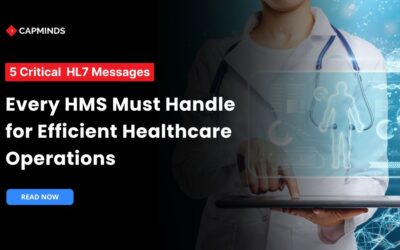Top 3 FHIR Adoption Challenges In 2025: How To Fix Them?
In today’s digital world, healthcare organizations are looking for effective ways to achieve true interoperability. In that way, FHIR (Fast Healthcare Interoperability Resources) stands as one of the top innovative technology for effective healthcare data exchange in the industry today. This article explains to you the FHIR adoption challenges and the smart solutions to overcome them easily.
FHIR In Healthcare 2021
FHIR (Fast Healthcare Interoperability Resources) is a standard for healthcare data exchange created to drive clinical interoperability. FHIR (pronounced fire) was published in 2014 by HL7, standards developing organization positioned at the origins of interoperability.
FHIR offers a common set of APIs (pieces of code enabling data transmission) for healthcare systems to communicate with each other. FHIR specifications are free to use and employ technologies and web standards commonly used in other industries, specifically the REST architectural style of API. Developers can combine different components of FHIR (called resources) to target specific clinical use cases or create extensions upon the core specifications. We will explain how it works in more detail in the next section.
So, FHIR is our best chance of achieving seamless data exchange. But what does it mean in practice for each party concerned?
FHIR for healthcare providers
FHIR creates a smooth pathway for connecting to third-party applications directly from your EHR. You’re not locked into your specific system and the integrations it provides. You can also launch your apps by contracting development to a vendor — with FHIR standards, this won’t be as expensive or time-consuming. FHIR also makes sure that data will always be maintained consistently in all its sources.
FHIR for healthcare software developers
Developers can focus on the value their products bring, not the implementation. HL7 provides clear and detailed documentation, the community shares numerous free tools and support, and the ability to use common web standards like XML, JSON, HTTP, and OAuth, allows programmers to build apps quickly and painlessly even if they’re not familiar with the healthcare domain.
FHIR for patients
FHIR delivers to patients a full overview of their clinical data. One handy example is Apple’s Health app on iOS. It uses FHIR to pull patient data from EHRs and other health institutions, combines with data generated on the patient’s phone, and creates a holistic visualization of their health. The seamless access to this information drives patient engagement and updates them on lab results, allergies, medications, procedures, and more.
FHIR adoption challenges in 2021
Despite its many benefits, FHIR adoption today is mostly driven by the need for compliance with interoperability rules. For healthcare providers, this means several steps of preparation before being fully FHIR-ready. This includes the following tasks.
Patient matching
Patient matching (also called identity matching) is the process of linking a patient’s data across different healthcare systems to create a holistic health record. One of the prerequisites of interoperability, if done poorly, can lead to catastrophic events, from million-dollar HIPAA violations to fatal medical errors.
There’s currently no official tooling to quickly locate duplicates and errors and then combine them in a single record, so most of the patient matching is done manually or not done at all. A quick implementation timeline and lack of clear guidelines for patient matching may result in creating even lower quality data after FHIR is implemented.
How to fix it?
The right solution- A Master Patient Index. MPI or EMPI (for enterprise) is a database aggregating patient data from different systems. It uses algorithms to find relations between data elements. MPIs are usually sold by EHR providers, although they’re needed in laboratory or CPOE systems as well. Review what options are available to you or consider custom MPI development, which can ensure higher accuracy and the match engine that best covers your needs.
RELATED: 7 PROVEN REASONS THAT SHOWS YOU WHY FHIR IS BETTER
Security
FHIR wasn’t built to support security-related functionality. So to stay HIPAA-compliant, you need to build your safeguards. That includes setting up your authentication and access control, input validation processes, digital signatures, as well as writing data management policies.
How to fix it?
The right solution-SMART on FHIR. One of the greatest benefits of SMART on FHIR is its support of authorization and authentication protocols out of the box. If you’re not sure you can supply security processes on your own, this is the quickest solution.
Lack of infrastructure
FHIR offers an opportunity to take part in the app economy, but no technical toolkit to enable system architecture. This stalls the standard adoption, creating another set of complications healthcare providers and vendors have to deal with.
How to fix it?
The right solution – fully managed FHIR cloud platforms. In recent years, tech companies have created FHIR-focused tools to streamline healthcare app development and solve implementation challenges. Amazon, Google, Microsoft, IBM, and more companies like Salesforce and Apigee created enterprise-grade cloud platforms for managing APIs, storing data in FHIR format, securing Protected Health Information (PHI), and more.
These API for FHIR frameworks allow developers to deploy FHIR services in the cloud, basically by taking overall operations, maintenance, and compliance tasks. And they solve other challenges as well: access control and audit, legacy data conversion into FHIR, and even connectivity to analytics platforms. Cloud FHIR solutions are the easiest way to create and manage FHIR-based applications if you’re familiar with cloud platforms or have a partner who can set it up for you.
CapMinds For HL7 FHIR Services
At CapMinds, the best healthcare integration experts provide our clients with world-class HL7 FHIR integration service and support ranging from implementing to hosting and managing your organization’s full healthcare integration.






